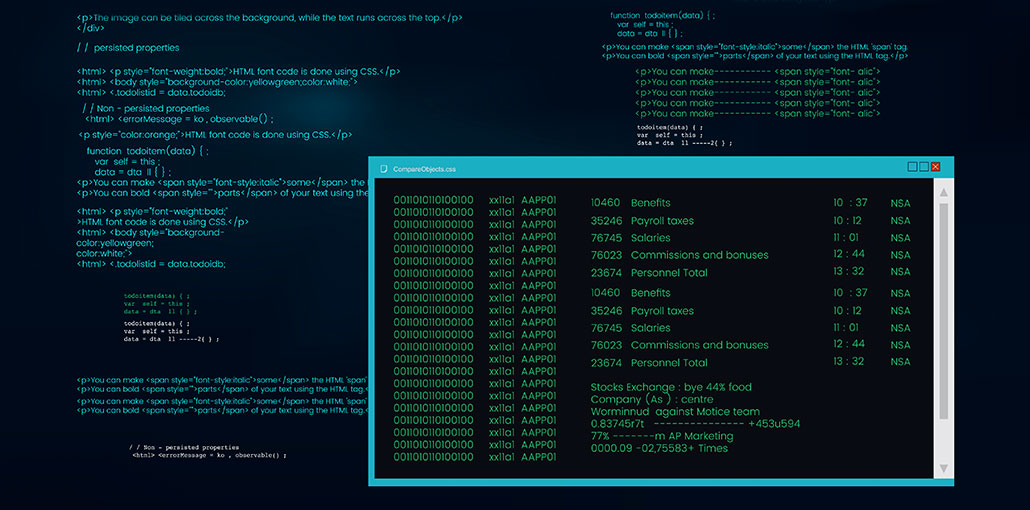The hardest part of learning machine learning is choosing where to start. It doesn’t matter if you are looking to improve your machine learning skills, or if you want to make a career shift into machine learning, it is natural that there is a question about the best programming languages for machine learning.
It is not easy to find the right programming language for machine learning. There are over 700 programming languages available, each with its own pros and cons. However, the good news is that you will soon discover which programming language is best suited for solving a specific business problem as you embark on your journey as a machine learning engineer.
These are common questions about how to program machine learning that programming career coaches get from machine-learning engineers.
“What exactly is machine learning?”
How much programming knowledge do I need to start a career in machine learning?
“Which language is best for machine learning?”
“What programming languages should I learn in order to be competitive in this job?”
Best Language for Machine Learning – Top 5 Best Programming Languages for Machine Learning
Let’s start with the basics and learn what machine learning is and how programming is necessary to implement it.
What is Machine Learning?
Machine learning Artificial intelligence is a subset that allows computers to learn from the fed data and make predictions. It is possible to make predictions about anything: whether “book” means making an appointment or reading a paperback, or whether there are cats and dogs in an image. if an email is spammed or not. A programmer isn’t responsible for writing the machine learning code that tells learning machine code how to distinguish between a cat and dog image.
Machine learning models, which are trained on large amounts of data, are able to distinguish between a cat and a dog. In this instance, the system is fed with a variety of images labeled cat and dog. Machine learning’s ultimate goal is to allow systems to learn without human intervention and then take appropriate actions.
Also read: Top 10 Programming Languages to Become an AI Developer
What programming skills are required to learn ML
It depends on the purpose of machine learning and how much programming knowledge you have. If you want to use machine learning models in real-world business problems, a programming background is required. However, if you just want to learn the basics of machine learning concepts, then math and statistics knowledge is sufficient.
It all depends on your motivation to harness the power of machine learning. For ML models to be implemented, you need to understand the basics of programming, algorithms, and data structures. It is easy to start a career in machine learning with the many machine learning libraries that are built into various programming languages.
Although you don’t need to be a programmer, there are many graphical and scripting machine-learning environments such as Weka, Orange, and BigML that allow you to implement ML algorithms without having to code. However, you must have a basic understanding of programming.
Five Best Languages for Machine Learning
According to industry experts, there is no one best programming language for machine learning. Each language is best where it is needed. There is no one machine learning language that is the best for machine learning. There are certain programming languages that are better suited for machine learning tasks than others. Machine learning engineers often choose the right machine learning language for their business problems.
Machine learning engineers may prefer Python to solve NLP problems, but they also prefer R or Python to perform sentiment analysis tasks. Some machine learning engineers will use Java to support other machine learning applications such as security and threat detection. Java is often used by machine learning engineers who have a background in Java programming.
We have compiled five of the best programming languages for machine learning, regardless of individual preferences.
1. Python
Python is ranked first in the IEEE Spectrum’s latest annual ranking of most popular programming languages with a score of 100. The Stack Overflow trends in programming languages clearly show that Python has been on the rise over the last five years.
Machine learning is enjoying increasing popularity due to its widespread adoption. Machine learning engineers make up 69%. Python is the preferred choice for data analytics and machine learning. This is due to its extensive library ecosystem, which allows machine learning practitioners to access, handle and transform data quickly.
Python is a popular platform-independent, simple, and easy-to-read choice for machine learning engineers. Here is Tim Peters’s poem, “The Zen of Python”, which beautifully explains why Python is becoming the most popular language for machine learning.
For machine learning, Python is the preferred programming language for many of the IT giants, including Google, Instagram, and Facebook, Dropbox, Netflix. Walt Disney, YouTube. Uber. Amazon. Here’s why Python is the most popular language for machine learning today:
Extensive Collection of Libraries and Packages
Python’s packages and libraries provide a base-level code that machine-learning engineers can use without writing new code. For machine learning, continuous data processing is required. Python provides a variety of packages and libraries that can be used for nearly every task. This allows machine-learning engineers to decrease development time and increase their productivity when creating complex machine learning apps. These libraries and packages have zero learning curves. Once you are familiar with Python programming basics, you can begin using them.
- Use SciKit, NLTK, and NumPy to work with textual data
- Use Sci-Kit image or OpenCV to work with images
- Use Librosa to work with audio
- Implementing deep learning – use TensorFlow, Keras, PyTorch
- Implementing basic machine-learning algorithms – Use SciKit- Learn.
- Sci-Py is a tool that allows you to perform scientific computing.
- Use Matplotlib, SciKit, and Seaborn to visualize the data clearly.
Code Readability
Machine learning math is often complex and not obvious. To successfully implement complex machine learning algorithms and flexible workflows, code comprehension is crucial. Because Python is simple in syntax and places a high value on code readability, it makes it easier for machine learning engineers not to think about how to write but to concentrate on what to write. Machine learning professionals can easily share ideas, algorithms, and tools through code readability.
Flexibility
Machine learning engineers can use Python’s multiparadigm flexibility and flexible nature to solve problems in the most efficient way. Machine learning specialists can choose from procedural, imperative, object-oriented, and functional programming styles. Python’s flexibility allows machine learning engineers to choose the right programming style for their problems.
Sometimes it might be advantageous to store the state of an object, while other times it may be necessary to pass around functions as parameters. Python allows you to choose between the two approaches and minimizes the chance of making mistakes. Python offers flexibility in programming styles, but Python also has many advantages when it comes to implementing modifications. Machine learning practitioners don’t have to recompile source code to see the new changes.
Also read: Best 8 Programming Languages for Hacking
2. R Programming Langauge
There are more than 2,000,000 R users, 12000 packages in CRAN’s open-source repository, and close to 206 R Meetup groups. R also has 40K+ members in LinkedIn’s R group. R is a powerful programming language for machine-learning written by statisticians for statisticians. Non-programmers can also use the R language, including data miners and data analysts as well as statisticians.
Understanding statistical principles is a key part of the machine learning engineer’s daily job duties. This allows them to apply these principles in big data. The R programming language is an excellent choice for crunching large numbers. It is also the preferred choice for machine-learning applications that require a lot of statistical information.
R is a useful programming language for machine learning engineers. It includes RStudio’s user-friendly IDE and many tools to create graphs and manage libraries. R is one of the most powerful machines learning languages to solve business problems. It is the best programming language for machine learning.
- To make accurate predictions, machine learning engineers must train algorithms and bring automation in. The R language offers a range of tools that can be used to evaluate and train machine learning algorithms. This makes machine learning simple and accessible. R provides a comprehensive list of machine learning packages.
- MICE to deal with missing values
- CARET is a tool for solving classification and regression problems.
- For creating data partitions, use PARTY or rpart
- RandomFOREST is a tool for creating decision trees.
- Data manipulation: dplyr, tidyr
- Use ggplot2 to create beautiful visualizations.
- Shiny and Rmarkdown are great for sharing insights through reports.
- R is an open-source programming language that makes it highly affordable for machine learning projects of all sizes.
- R supports natural implementations of matrix arithmetic, as well as data structures such as vectors, that Python currently does not support. Machine learning engineers must use NumPy to implement similar functionality in the Python programming language. This is slower than R and more complicated.
- Because of its wide range of machine learning methods, R is a strong choice for machine learning. Be it data visualization, data sampling, data analysis, model evaluation, supervised/unsupervised machine learning – R has a wide variety of techniques.
- Programming in R is very easy.
- R is flexible and cross-platform compatible. R doesn’t place restrictions on the tasks it performs. Machine learning professionals can use R to mix tools.
3. Java and JavaScript
Thought R and Python Machine learning enthusiasts continue to love Java. Java is becoming more popular among machine learning engineers, who come from Java development backgrounds. They don’t have to learn new programming languages like R or Python to implement machine learning. Many organizations already have large Java codebases.
Most of the open-source tools that allow for big data processing such as Hadoop and Spark are written in Java. Machine learning engineers can integrate Java code repositories with ease by using Java to build machine learning projects. It is a popular machine learning language due to its ease of use, package services, and easy debugging. It is the best language for machine learning.
Java provides many third-party libraries for machine learning. JavaML, an inbuilt machine learning library, provides a variety of machine-learning algorithms that can be used in Java. You can also use the Arbiter Java library to tune hyperparameters, which is an essential part of making the ML algorithms run efficiently.
- You can also use Deeplearning4J library, which supports popular machine-learning algorithms such as Neuroph or K-Nearest Neighbor. This library lets you create neural networks or use Neuroph for those networks.
- Every machine learning engineer must consider scaling before beginning a project. Java allows machine learning engineers to scale applications more easily, making it an excellent choice for developing large and complex machine-learning applications.
- The Java Virtual Machine platform is a great one for machine learning because engineers can use the same code across multiple platforms. JVM allows machine learning engineers to create custom tools quickly and offers a variety of IDE’s that can help increase their productivity. Java is best for speed-critical projects in machine learning because it executes quickly.
Also read: What is Java Architecture? Components of Java Architecture
4. Julia
Julia, a dynamic programming language that is general-purpose and high-performance, emerges as a competitor to R and Python. It has many features exclusively for machine learning. Although it can be used to develop all types of applications, it is best suited for high-performance computational science and numerical analysis. Julia supports all hardware, including TPUs and GPUs, which makes it ideal for machine learning applications in big companies like Apple, Disney, and Oracle.
Why should you use Julia to learn machine learning?
- Julia was specifically designed to implement basic math and scientific questions that are the basis of most machine learning algorithms.
- Julia code can be compiled in Just-in-Time, or at run-time using the LLVM Framework. This allows machine learning engineers to work at great speed, without the need for any profiling or optimization techniques.
- Julia’s code can be executed by all. Once a machine-learning application has been written, it can be compiled natively in Julia from Python or R using a wrapper such as PyCall or RCall.
- As we have discussed, scaling is essential for machine learning engineers. Julia makes it easy to deploy quickly at large clusters. Julia is a great choice for machine learning applications, as it provides powerful tools such as TensorFlow and MLBase.jl. Flux.jl and SciKitlearn.jl.
- Support editors such as Emacs or VIM, and also IDEs such as Visual studio and Juno.
5. LISP
LISP (List Processing), which was founded in 1958 by John McCarthy is the second-oldest programming language still in existence. It is primarily designed for AI-centric applications. LISP, a dynamically-typed programming language, has influenced many machine learning programming languages such as Python, Julia, or Java. LISP uses Read-Eval-Print-Loop and can code, compile and run code in over 30 programming languages.
LISP is the most flexible and efficient machine learning language to solve specific problems. It adapts to the solution that a programmer is programming for. This is what sets LISP apart from other machine-learning languages. It is used today for machine learning and inductive logic problems.
It was used to develop the AI chatbot ELIZA. Machine learning professionals can still use it today to create chatbots for eCommerce. LISP deserves to be mentioned as the best language for machine learning because developers still use it for projects that are heavily on machine learning, such as those that LISP offers.
- Rapid prototyping capabilities
- Dynamic object creation
- Garbage collection by automatic
- Flexibility
- Support for symbolic expressions
LISP is flexible enough to be used for machine learning but it lacks support from well-known machine learning libraries. LISP is not a machine learning language that is easy to learn (it’s difficult for beginners) nor does it have a large user base like R or Python.
And the Award for the Best Language for Machine Learning Goes To…
I hope that you learned something about the top languages for machine learning. Keep in mind that machine learning is a dynamic field and that there are many different uses for each language. Machine learning language choice depends on where it will be used, what the project is about, and which programming languages are being used within your company/industry.
Machine learning practitioners can make the best choice for the right programming languages for machine learning by testing, experimentation, and experience. It is best to have at least two programming languages for machine learning. This will allow you to put your skills into practice. Machine learning resume At the top of the stack. It is simple to learn another machine learning language once you have become proficient in the first.










Leave a comment